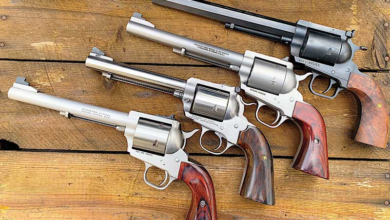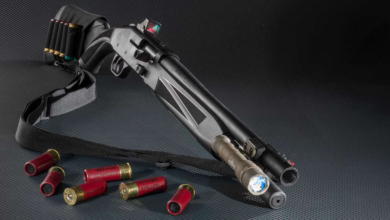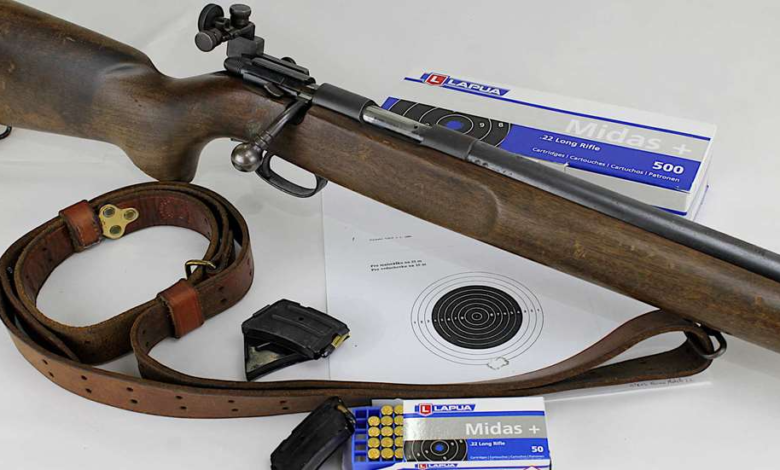
Is it possible that an 80-year-old “second best” .22 match rifle can still go toe-to-toe with some of today’s best offerings? Remington’s long-discontinued Model 513-T Matchmaster wasn’t the company’s top of the line match rifle, but it shot like one—and still does so.

Remington debuted “The Matchmaster” 513-T target rifle in 1940 during a time when NRA Smallbore competition enjoyed equal footing with NRA High Power in respect and popularity. Indeed, given the tight purse strings of the Great Depression, it’s likely that Smallbore was more popular than High Power as a less-expensive pursuit. It certainly appears so in perusing American Rifleman magazines from the 1930s and into the 1950s, wherein Smallbore consistently gets significant coverage and there was plenty of advertising aimed specifically at the Smallbore competitor.
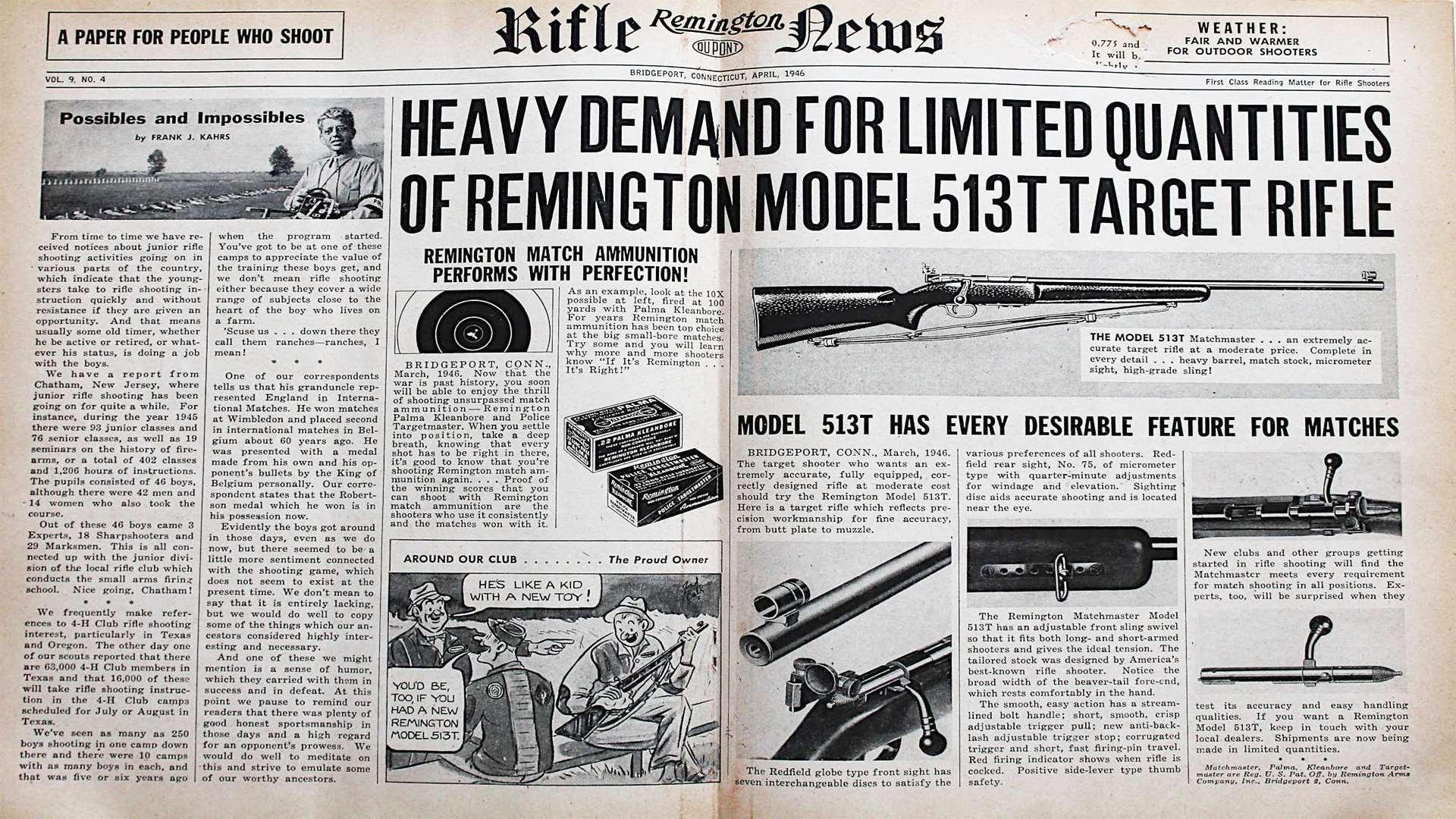
Second best
Remington’s Smallbore flagship rifle at the time was the Model 37 Rangemaster, featuring a beefy walnut stock, heavy 28-inch barrel, adjustable trigger and Redfield Olympic sights, making a heavyweight package of 12 pounds. The Rangemaster competed directly with and against Winchester’s Model 52, which preceded the Remington by a few years. Most top-tier Smallbore competitors of the day shot either Remington’s Model 37 or Winchester’s Model 52. For those whose pockets weren’t quite as deep, Winchester’s Model 75 was that company’s second-best Smallbore offering, and to which Remington answered with its 513-T Matchmaster as its own second-best .22 Smallbore rifle.
Three other period Smallbore rifles in this second-best category are the Savage Model 19, Mossberg 44US and Stevens 416-2.
“Second best,” however, refers more to aesthetics and some stamped steel parts, and not necessarily to accuracy. In the June 1946 American Rifleman “Dope Bag” column, Edwards Brown said, “Many of these rifles in the medium-price range are capable of accuracy comparable with the higher-priced rifles.”
“Extremely accurate … moderate price”
Period Remington advertising for the Model 513-T Matchmaster summed up its purpose, market and niche as “an extremely accurate target rifle at a moderate price.” Remington accomplished this by slightly scaling back from the Model 37 dimensions and replacing the high-end Redfield Olympic sights with lesser-but-good Redfield 75 rear and a globe front sight, though it could also be ordered sans sights. Surprisingly, the 513-T’s “moderate price” includes trigger adjustments for pull weight and overtravel. A heavy 27-inch barrel and walnut stock with a wide beavertail fore-end contribute to the 513-T’s respectable nine pounds.
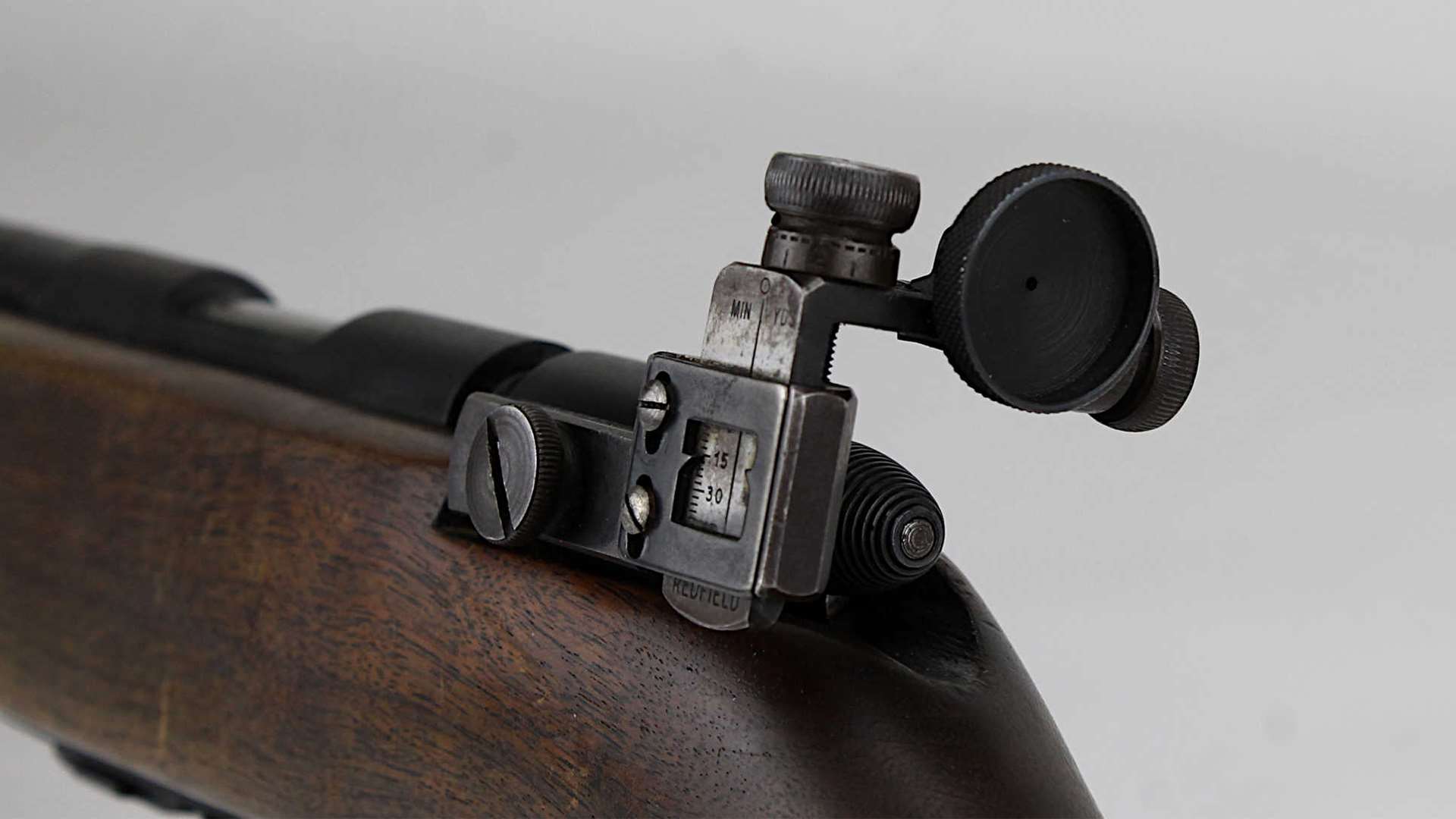
As is the case with most older firearms, the 513-T presented here is not fully in original condition, as the muzzle has been “refreshed” and a previous owner replaced the factory steel butt plate with a Dunlap serrated rubber recoil pad that looks like that found on Remington’s Model 40X premier .22 target rifle. Additionally, I replaced a missing rear sling swivel and missing forward sling swivel rail. The stock is well-used but not actually abused, and the blued steel barrel, action and other parts show considerable patina of aging, as we all shall at 80.
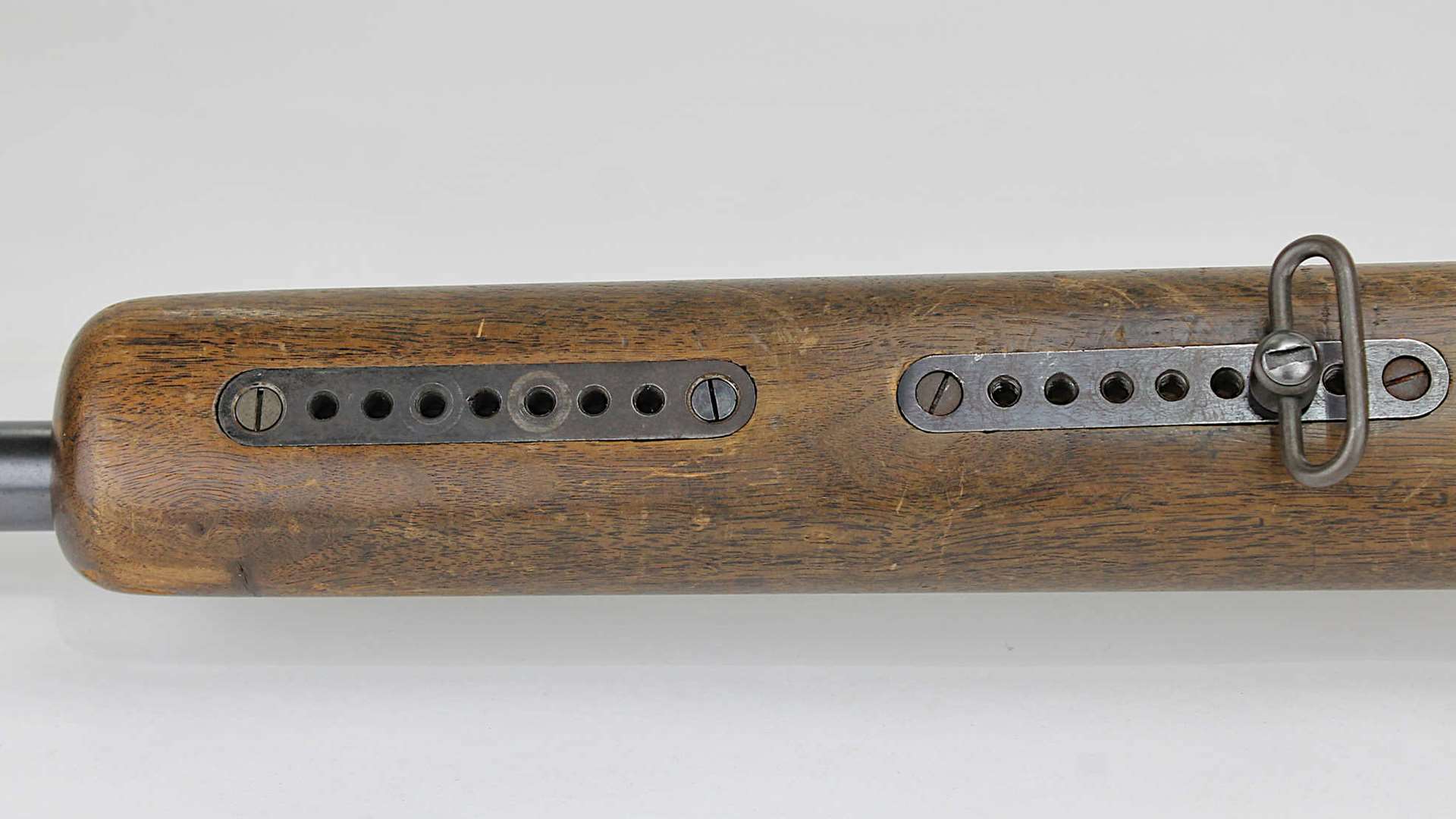
The aforementioned sling swivel rails inlet into the fore-arm each have seven threaded holes along their length to accept the screw-in sling swivel, which serves as a stop for a gloved hand when using a sling. The arrangement permits about seven inches of user adjustment to suit the individual shooter’s arm length, from Orangutang to Munchkin, and the wide fore-end offers plenty of hand-filling stability. The rifle feeds from a detachable steel six-round magazine, so it’s a candidate for Three-Position shooting. Trigger pull on this rifle is set at just under three pounds.
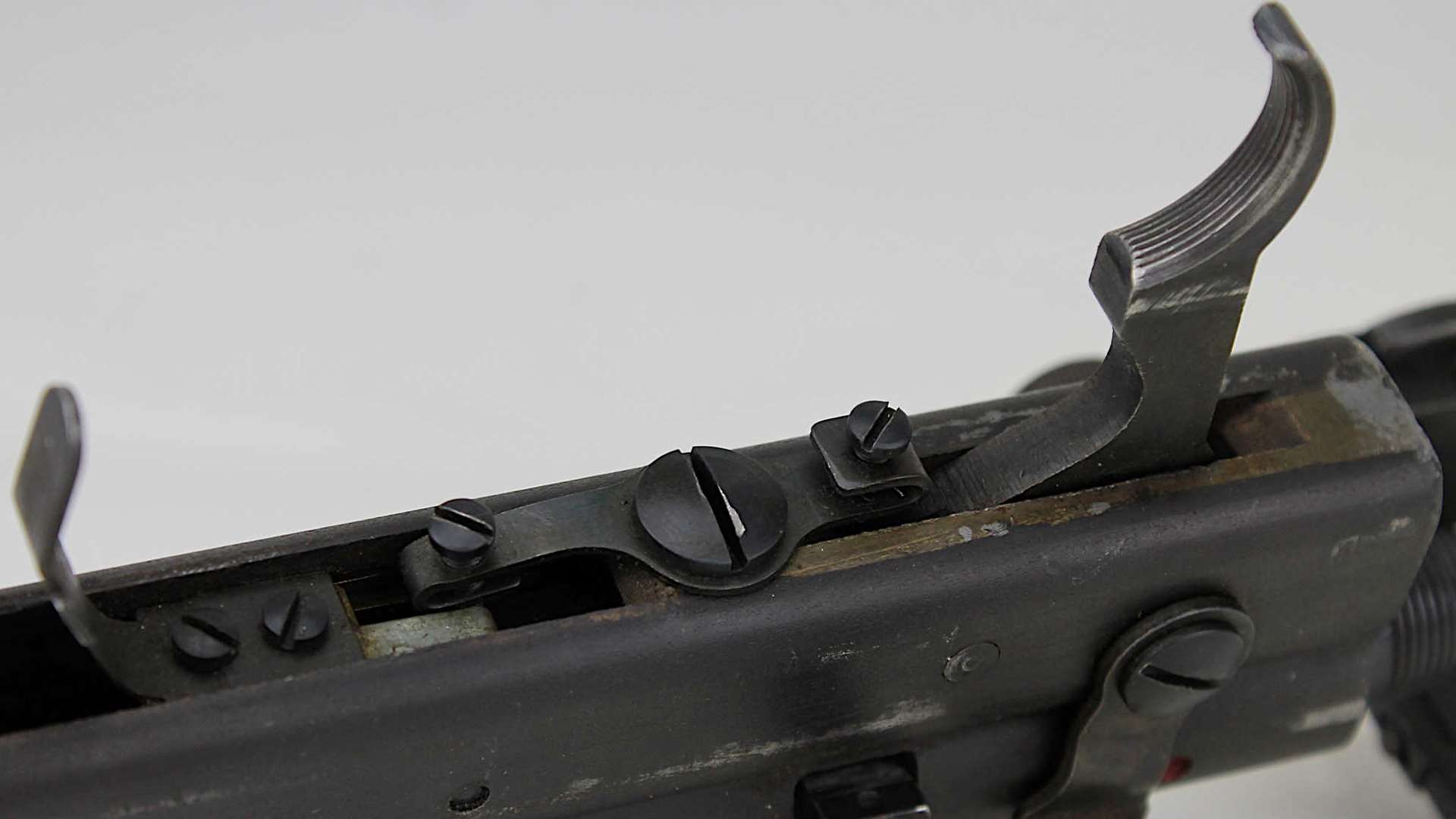
Some literature describes the 513-T’s barrel as being partially free-floated, but this one totally fails the “dollar bill check”—a bill won’t fit between barrel and stock anywhere along the length of the barrel channel. Partial free-floating is accomplished while cutting the barrel channel, leaving about two inches of wood at the fore-end tip to stand proud above the bottom of the barrel channel. When performed correctly, tightening the receiver screw pulls the receiver and barrel downward, and allows that bit of proud wood to exert upward pressure on the barrel. The length of barrel between that proud wood and the receiver are thus free-floated.
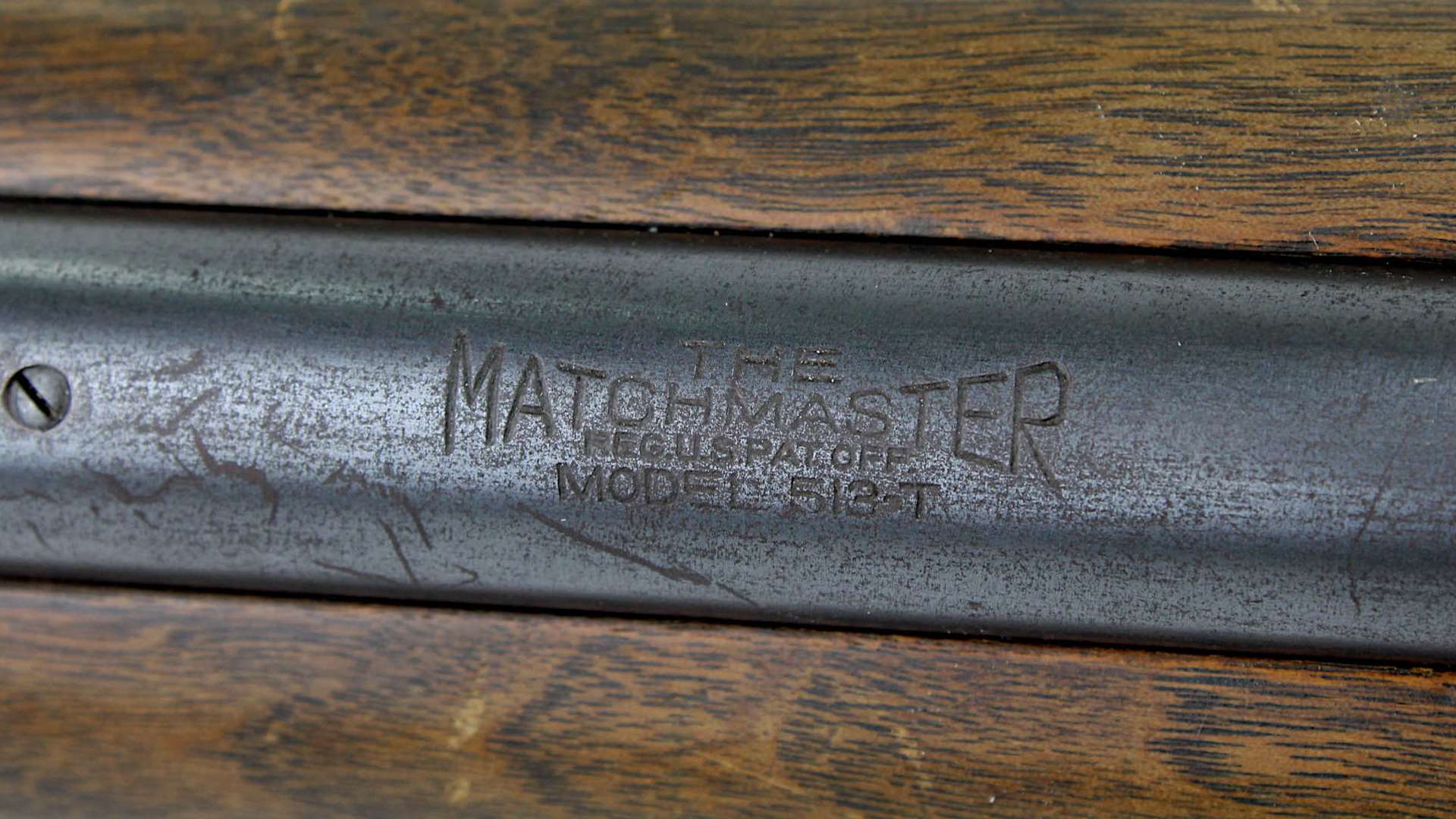
Stampings all are on the barrel. “THE MATCHMASTER REG. U.S. PAT. OFF MODEL 513-T” appears between the screw holes intended for scope block mounting, with “REMINGTON ARMS CO. INC., ILION, N.Y. MADE IN USA PATENTS PENDING” further toward the muzzle. “Remington REG. U.S. PAT. OFF” and “22 LONG RIFLE” is stamped closer to the chamber end. “CRR” stamped on the left side of the barrel ahead of the receiver shows Remington manufactured this particular rifle in April 1946 (the Remington Society of America posts a handy chart on its website for deciphering these factory codes for rifles made after 1921). The preceding arrow mark may identify the factory inspector. Being manufactured before the Gun Control Act of 1968 (GCA 68), the serial number appears on the underside of the barrel just in front of the fore-end, rather than on the receiver.
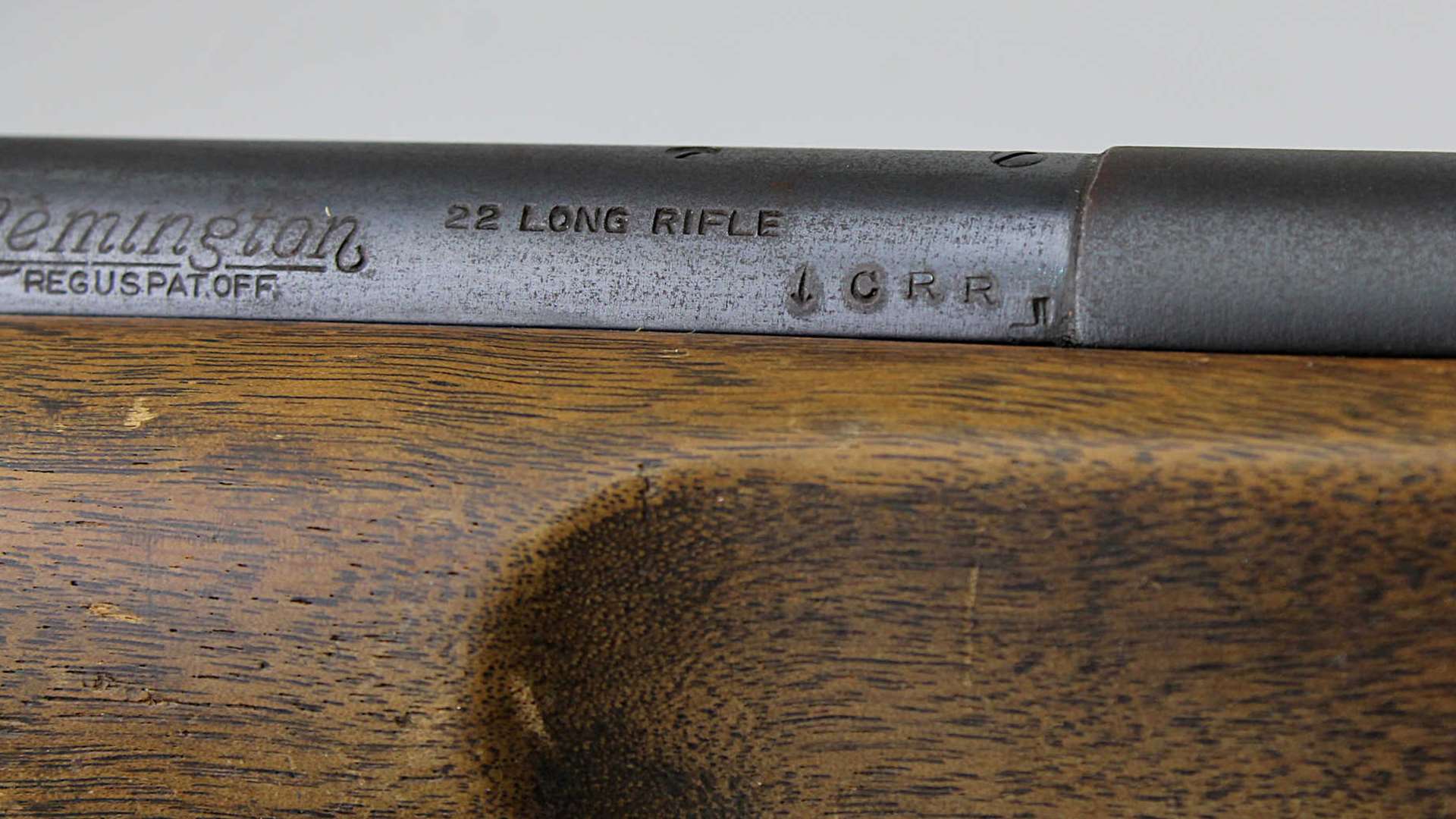
Still a shooter
Remington made only a limited quantity of Matchmasters in 1946 as, similar to so many other American manufacturers, it was still in the process of “reconverting”—that is, shifting from making war materiel to resuming manufacture of peacetime commercial products. Wartime manufacture of the 513-T for training military recruits probably helped this second-best target rifle to continue in production for another 22 years.
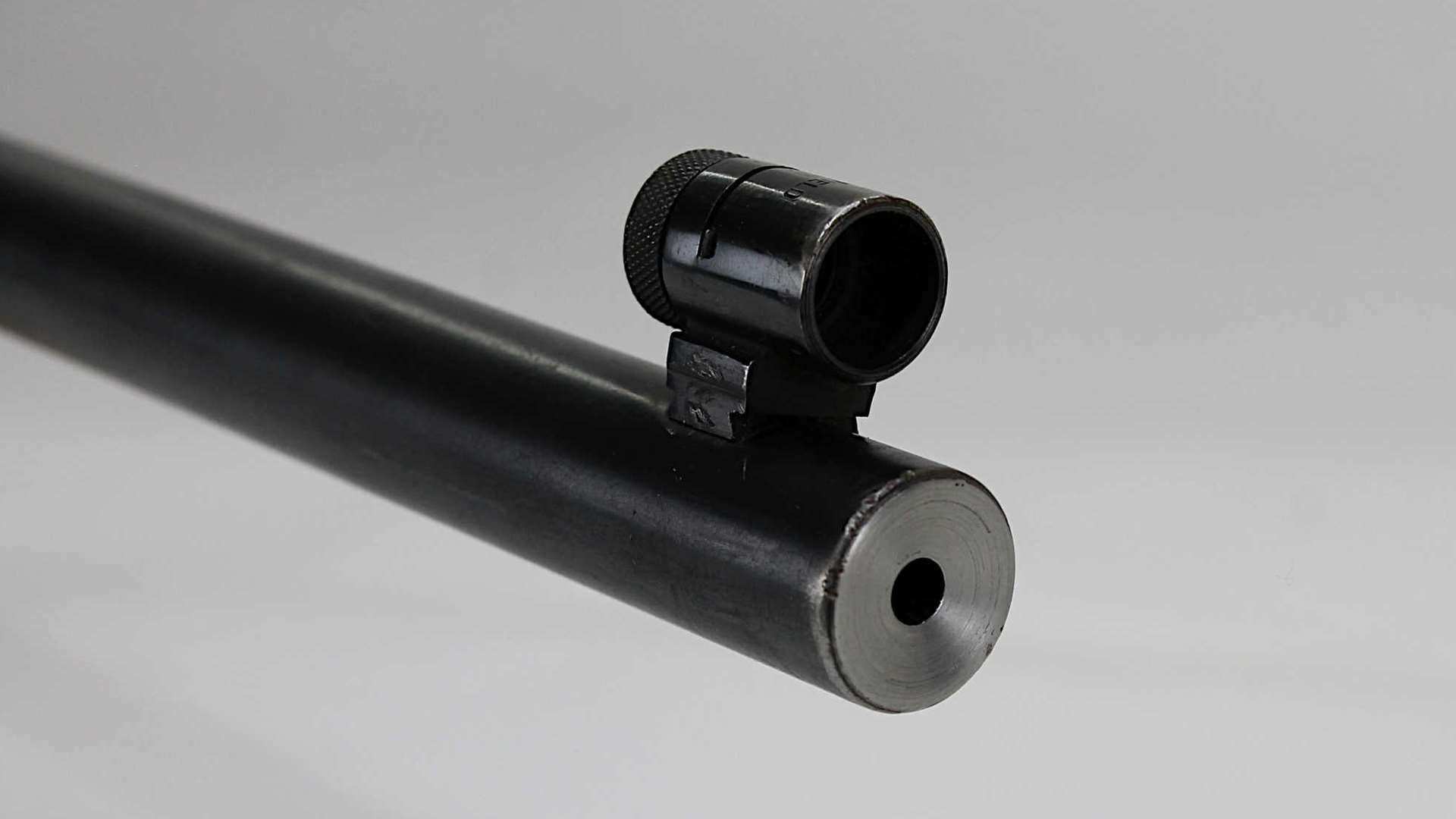
Perhaps the most pertinent point here is that this 513-T Matchmaster can still shoot with some of the best. This rifle punched one-hole groups at 50 meters from a machine rest at Lapua’s 100-meter test facility in Mesa, Ariz., with Lapua Midas+ match ammunition. If you can punch a onehole, 50-meter group with a .22 at age 80, you and the aged “second best” 513-T are still the pair to beat.
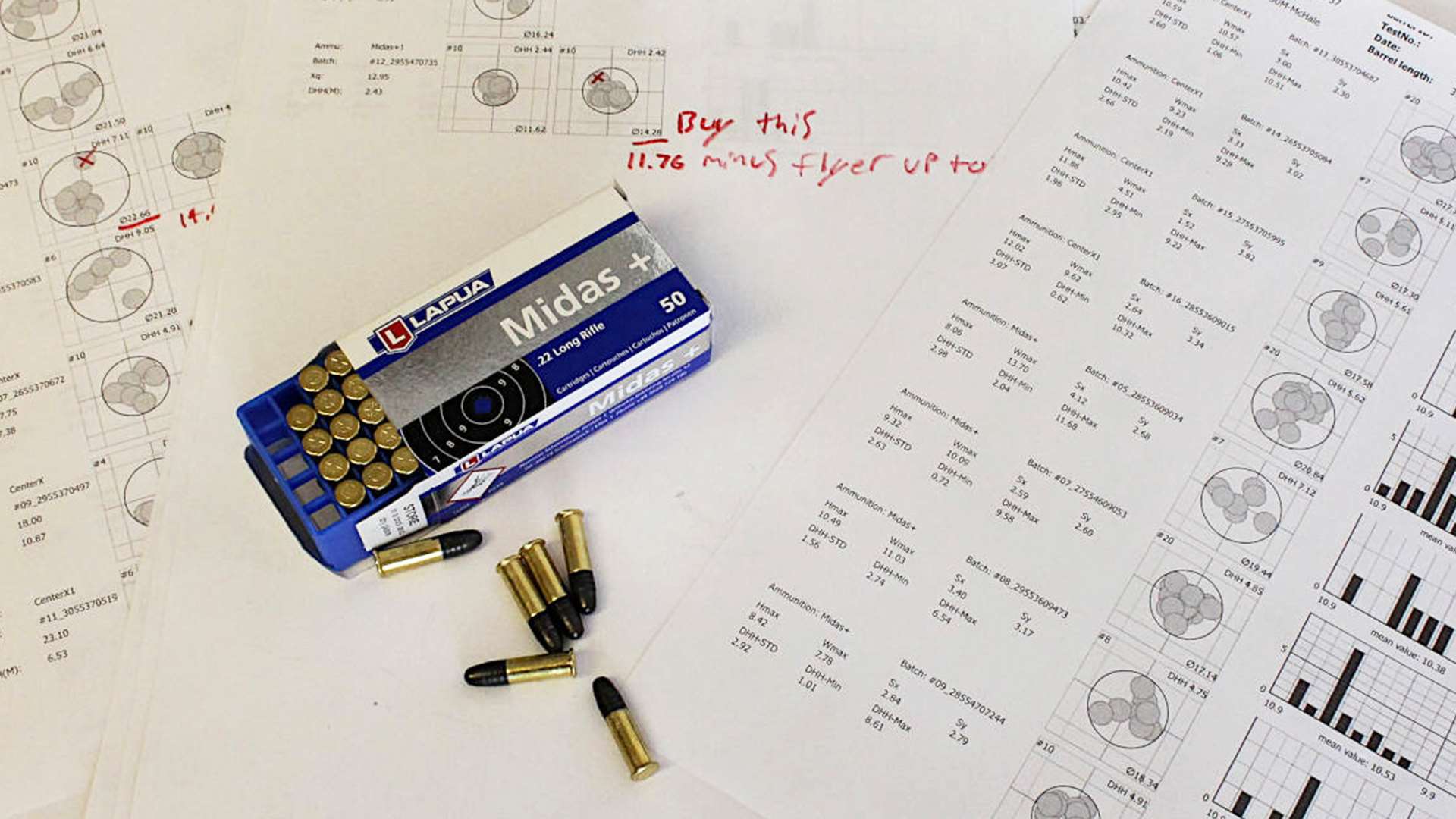
Parts available
Matchmaster 513-Ts are generally selling in the $350 to $700 price range, depending upon condition (with a few exorbitant anomalies, of course), and parts are still out there. No loner, the 513-T is one of Remington’s 500 Series of .22s, which includes the 510, 511, 512, 510X, 511X, 512X and 521-T rifles. There was also a 513-S Matchmaster Sporter variant, the most obvious visual difference being a slimmer barrel with barrel-mounted open sights and provision for scope mounting, and a checkered hunting-style stock. Unsurprisingly, some parts interchangeability exists between these models; parts are available from Numrich Gun Parts Corp, Jack First Gun Parts and Sarco, Inc. I found no schematic (“exploded view”) specifically for the 513-T, but schematics for the other 500 Series rifles are helpful; Numrich Gun Parts Corp has one for the Model 512 viewable online. Matchmaster disassembly instructions and a few gunsmithing hints from the March 1, 2017, issue of American Gunsmith are posted online at The Free Library.
Apparently, the last Matchmaster rolled off the Remington assembly line in 1968, joining approximately 137,301 predecessors, of which about 10,000 went to the U.S. Army, Army ROTC and DCM clubs as trainers during World War II. These latter are marked, “US PROPERTY;” some were blued and some were Parkerized, and they can fetch twice the coinage from collectors today compared to the civilian versions. Doing the math, that comes out to 408 rifles per month over the life of the model, not too shabby considering Remington had so many other priorities during the war. Apparently, a 513-T still makes an occasional appearance at a rifle match. If true, that’s a remarkable continuing legacy for a “second-best” target rifle.


